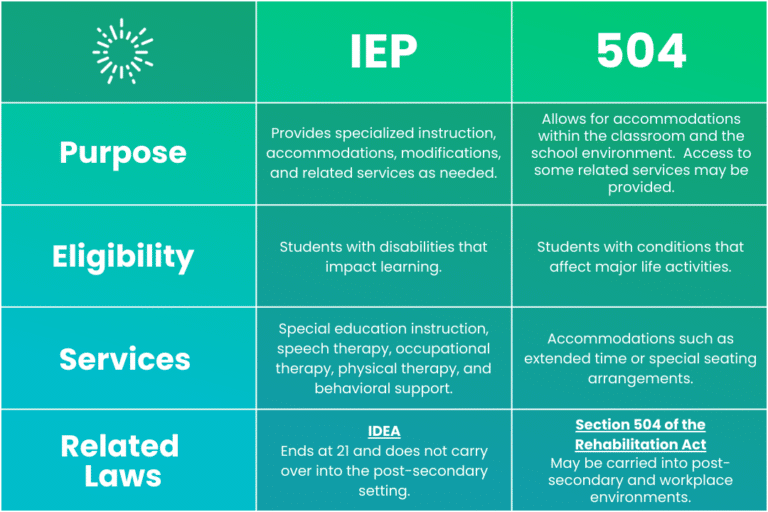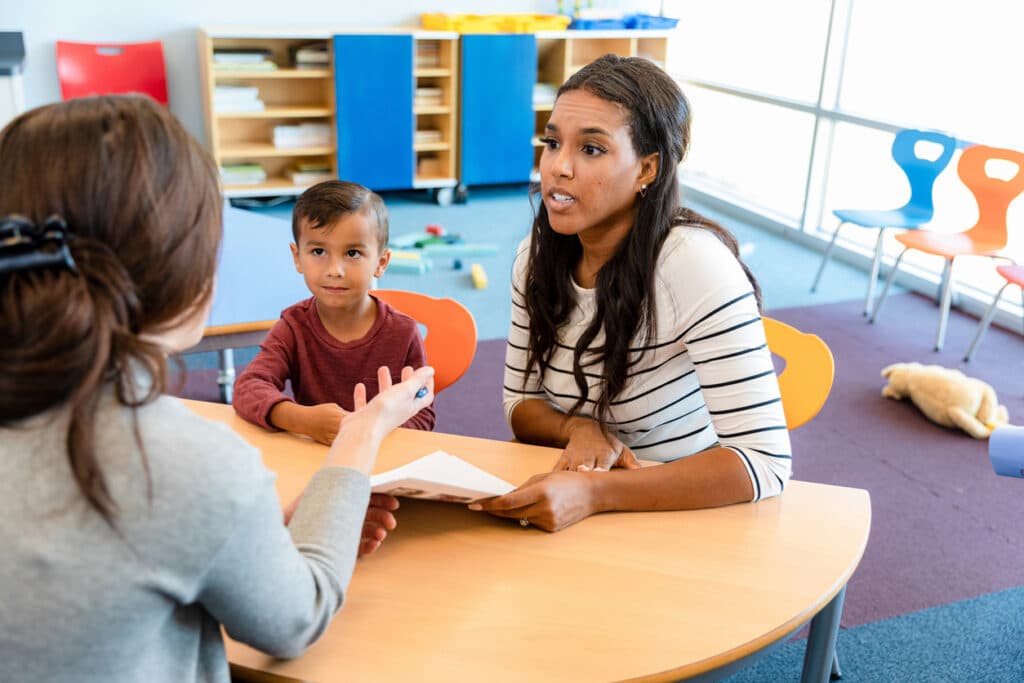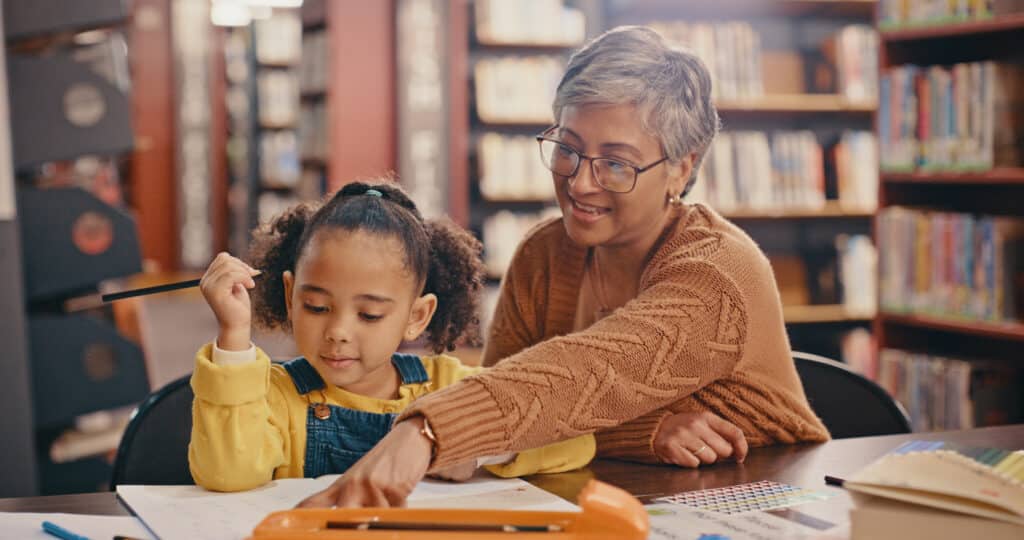When students struggle academically, behaviorally, or emotionally, it can be hard to know what kind of help they need. Even when educators, families, and support providers recognize that something is not working, figuring out the next step is not always easy.
With the right guidance and resources, educators and parents can transform these challenges into opportunities for growth and confidence. The key lies in understanding and identifying each student’s specific needs, ensuring a tailored approach that fosters both academic and personal development.
It starts with understanding the critical tools designed to help these students thrive: the Individualized Education Programs (IEPs) and 504 Learning Plans.
These formal plans are essential tools that help ensure students with disabilities or learning differences receive the support they need to succeed in a general education environment. However, despite their importance, many people find them confusing and difficult to navigate.
Whether you are a teacher, school leader, parent, or service provider, you will find practical, straightforward insights here to help you:
- Understand the difference between IEPs and 504 Plans
- Know who qualifies and how eligibility is determined
- Identify your role in supporting the student
- Develop effective plans tailored to each learner’s needs

Key Takeaways
- IEPs provide individualized instruction and services for students with disabilities under IDEA.
- 504 Plans offer accommodations for students whose impairments impact major life activities but do not qualify for special education.
- Partnerships matter: Ongoing collaboration between families, teachers, and school teams is essential.
- Plans evolve: IEPs and 504 plans should be reviewed and revised regularly to reflect students’ needs.
IEP vs. the 504 Learning Plan: Understanding the Differences
IEPs and 504 Learning Plans are designed to help students facing challenges in a traditional classroom setting. While they share a common goal—access to education—they serve different purposes.
IEP (Individualized Education Program)
An IEP is a customized education plan for students who qualify for special education services under the Individuals with Disabilities Education Act (IDEA). These students have a documented disability that impacts their ability to make progress in school. IEPs provide specially designed instruction and may include services such as:
- Speech therapy
- Occupational therapy
- Physical therapy
- Behavioral support
504 Learning Plan: A 504 Plan helps individuals access the general education curriculum by providing accommodations. Unlike IEPs, 504 plans do not involve specialized instruction. Instead, they ensure that students with conditions that affect major life activities related to learning and concentration can access education in the same way as their peers.
504 Learning Plans ensure these students can access the general education curriculum with supports such as:
- Extended time on tests
- Preferential seating
- Access to assistive technology

Who Qualifies? Understanding Eligibility for IEPs and 504 Learning Plans
The process typically starts when a concern is raised about a student’s learning, behavior, or development. From there, eligibility is determined through a process of evaluations and assessments.
IEP Eligibility:
A student must meet the criteria for one or more disability categories under IDEA. The school team conducts a comprehensive evaluation to determine how the disability impacts the student’s education. If eligible, the IEP team—including parents, teachers, and service providers—develops a tailored plan.
504 Learning Plan:
Eligibility under Section 504 of the Rehabilitation Act requires evidence that a student has a physical or mental impairment that substantially limits one or more major life activities. The school uses a combination of data, such as medical records, teacher input, and academic performance, to determine if accommodations are needed.
The Role of Evaluations and Assessments
Evaluations are the foundation for creating meaningful support plans. For IEPs, evaluations must follow specific legal guidelines and are conducted by a multidisciplinary team. A reevaluation is required every three years to reassess the student’s needs.
504 evaluations are typically less formal but still rely on a combination of sources such as observations, classroom performance, and parent input. Written consent is required before evaluations begin, and families can request an Independent Educational Evaluation (IEE) if they disagree with the school’s assessment.
Evaluations may include, but are not limited to:
- Academic assessments
- Psychological testing
- Speech and language or other related service evaluations
- Behavioral observations
These evaluations help identify the areas where the student struggles. They also highlight the services, accommodations, and/or modifications necessary to support them throughout school. The results of these evaluations guide the development of the plan that will best support the individual student’s needs.

Roles and Responsibilities
Collaboration between educators, parents, and the IEP/504 team is crucial to the success of these plans. Each stakeholder plays a unique and vital role in ensuring the plan is effectively implemented and the student’s needs are met.
- Educators: Educators are the central figures in implementing the plan. So they are responsible for delivering the services outlined in the IEP or 504 Plan. This includes differentiating teaching strategies, ensuring accommodations, and documenting student progress.
Teachers and service providers often play the role of the first point of contact if adjustments to the plan are needed. And they must remain in close communication with the rest of the team. - Parents: Families offer critical insights into the student’s strengths and challenges outside of school. They advocate for their child, attend meetings, and collaborate with educators to ensure the plan reflects the student’s full needs
- The IEP/504 Team: Special education teachers, school psychologists, speech therapists, and other specialists play a key role in developing and delivering services. Their expertise informs the accommodations, supports, and goals included in the plan.
Developing Effective Plans
An effective plan should consider the whole child, not just academic performance, but also social-emotional development, interests, and strengths.
It’s essential to create a supportive learning environment that addresses academic challenges and fosters confidence and engagement.
Remember, plans for an IEP and a 504 will look different. An IEP is much more extensive than a 504 Plan, but both involve accommodations that support student learning. Both types of plans should:
- Align with the student’s documented needs
- Include input from all stakeholders
- Be reviewed regularly and revised as needed
Collaboration between team members is key to ensuring these plans are effective and personalized. This is especially true between educators and parents.
Accommodations vs. Modifications
Both IEPs and 504s include accommodations and modifications, which make the curriculum accessible to the student.
Accommodations are changes to how a student accesses information or demonstrates learning without altering the content itself. For example:
- Extra time on tests
- Audiobooks instead of printed text
Modifications change what a student is expected to learn. These are typically part of an IEP and may include:
- Simplified assignments
- Alternative grading systems
The key is choosing supports that give students meaningful access to learning while addressing their unique challenges.

Accommodations do not alter what is being taught but help level the playing field. Modifications, in contrast, may lower the academic expectations.
The best type of support strategies are designed to meet specific goals that the IEP or 504 team has determined necessary.
Setting Measurable Goals
One of the most crucial parts of an IEP is the goals section. In this part of the IEP, students have measurable educational goals tailored to their specific needs. The best way to determine if they are strong goals is to see if they are SMART:
S – Specific
M – Measurable
A – Achievable
R – Relevant
T – Time-based
SMART Goal Example
By the end of the second quarter, the student will read a grade-level passage of 100 words. They also must correctly answer five comprehension questions. These demonstrate understanding of the main idea and key details. They must achieve 80% accuracy in 4 out of 5 trials. It’s measured by weekly teacher assessments and progress monitoring.
- Specific (focused on reading comprehension)
- Measurable (80% accuracy in 4 out of 5 trials)
- Achievable (based on grade-level expectations)
- Relevant (supports literacy development)
- Time-based (to be achieved by the end of the second quarter)
Along with having strong, meaningful goals, the progress towards these goals must also be tracked regularly. An IEP should be updated to reflect the student’s progress and evolving needs.

Communication, Advocacy, and Collaboration
Effective communication between parents and educators is critical. Collaboration between these stakeholders ensures that the child receives the support they need in and out of the classroom.
Strategies for Successful Collaboration
Schedule regular meetings: Check-ins allow educators and parents to stay on the same page about student progress.
Resolve conflict proactively: If disagreements arise, open dialogue and dealing with them immediately are best practices. Speak respectfully and remain patient and calm. Remember to always focus on the student’s needs.
Be clear and specific: When assessing a student’s progress or raising concerns, be as specific as possible so that everyone understands the issue and a potential solution.
Maintain positive intent: Focusing on positive communication and assuming that each stakeholder’s top priority is the child’s success. This way, you can prevent personal perceptions or biases from impacting communication.
Maintain written records: When possible send all requests and important communication via email. If you’re having an in person meeting take detailed notes of what was said and any critical decisions that were made.
Adjusting Plans for Growth: When & How to Make Revisions
IEPs and 504 plans are living and evolving documents. They should change as the student progresses or concerns/issues arise, and necessary adjustments should be made as needed.
Adjustments may include:
- Adding data from progress monitoring
- Revising goals as needed
- Transitioning students to a new grade level
- Transitioning students out of services
- Postsecondary goals
Annual reviews are required, but more frequent meetings are encouraged.
Requesting Plan Revisions
It’s essential to hold regular meetings and progress reviews to discuss how the student is doing with their goals. If the student is not making the expected progress, adjustments should be made promptly.
If a student isn’t progressing, any stakeholder may request to meet and discuss potential revisions to the IEP or 504 Learning Plan. While both IEPs and 504s are reviewed annually, requests for adjustments can be made more frequently to best serve the child’s needs.

Expanding Access to Services: How eLuma Supports Schools and Students
IEP and 504 processes are essential. They ensure that students with disabilities and learning differences can access the resources and support they need to succeed.
Managing IEPs and 504 Plans can be overwhelming, especially in the face of staff shortages, inconsistent progress monitoring, and limited access to student services.
At eLuma, we are dedicated to providing schools with high-quality support. We partner with schools to:
- Fill staffing gaps with experienced teletherapists
- Improve progress monitoring with real-time data and insights
- Ensure consistent delivery of related services
- Support collaboration between school teams and families
Whether you are a school leader looking for support or a teacher needing guidance, eLuma can help you create more efficient, effective systems for student success.
“The ability to problem-solve alongside high-quality providers is essential. Access to a multidisciplinary team, where we can come together to find solutions for students, schools, and families and work through the obstacles that have impacted school success, can help build a community of trust and belonging and a space for all students to progress.”
– Kay Kelly, eLuma’s Mental Health Clinical Services Specialist and experienced School Psychologist.
Frequently Asked Questions for 504 Learning Plan
Do parents need to give consent for evaluations or changes to the IEP or 504 Plan?
Yes. For IEPs, written parental consent is required for evaluations before services begin. While 504 Plan procedures vary by district, involving parents in decisions is always considered best practice.
Can a student have both an IEP and a 504 Plan?
No. A student who qualifies for an IEP does not need a 504 Plan, since the IEP already includes accommodations and services.
What happens if a school is not following the plan?
Start by documenting your concerns and requesting a team meeting. Families can file a complaint with the district or contact the appropriate state or federal agency for support if the issue is not resolved.
How often are plans reviewed?
IEPs are reviewed at least once a year, with progress monitoring throughout. 504 Plans are typically reviewed annually, though changes can be made at any time if a student’s needs change.


